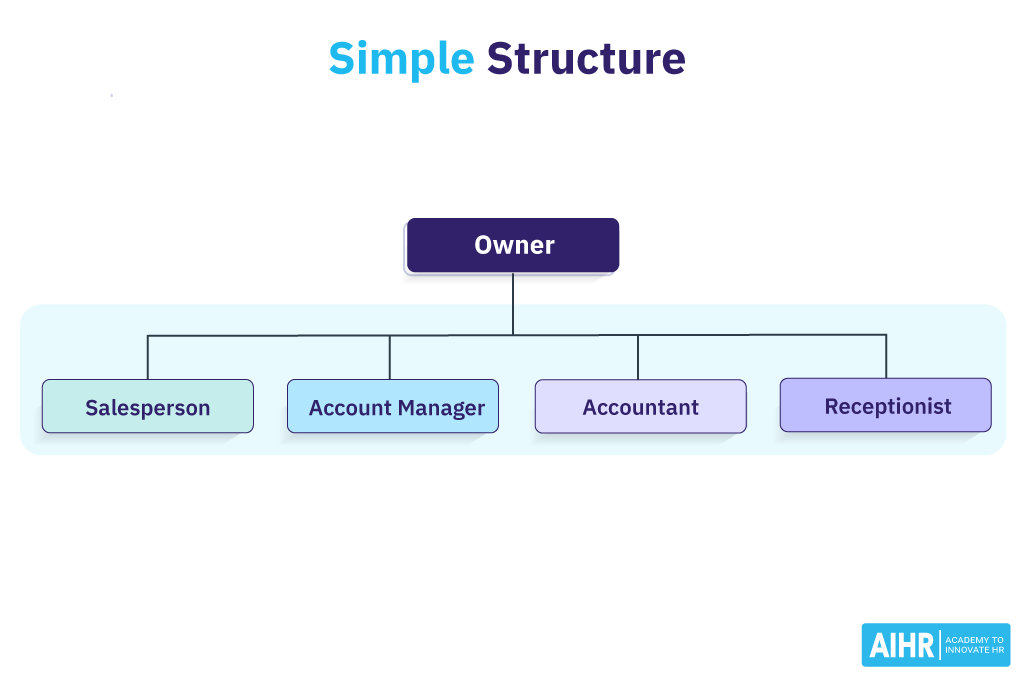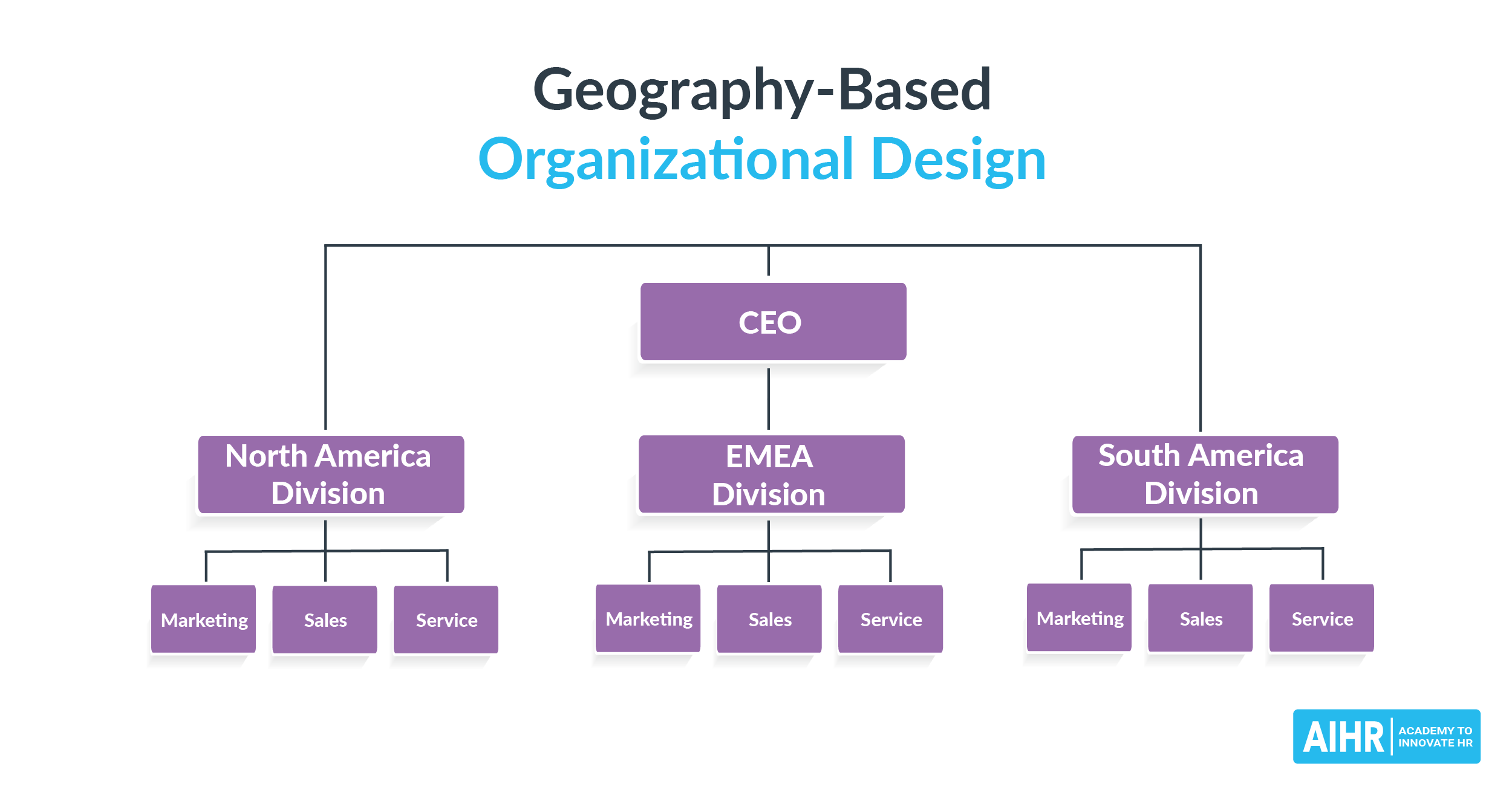Simple Structure
What is a simple structure?
A simple structure is a basic organizational system a company uses to centralize its operations. A simple management structure is usually characterized by low departmentalization, little work specialization, extensive control, and little to no formalization or policies that govern operations.
In plain terms, a simple structure doesn’t have a multilayered management system or formal departments. Instead, authority is centralized with the founder, who delegates work to staff directly. Because of a lack of management personnel, employees report to the business owner in case of any issues.
Key characteristics of a simple structure
The characteristics of a simple structure include the following:
- Flat hierarchy: Few levels of management, resulting in minimal layers between employees and the top decision-makers.
- Centralized authority: Decision-making is concentrated in one individual or a small group, typically the founder or owner.
- Informality: Roles and responsibilities are not rigidly defined, allowing employees to handle multiple tasks.
- Flexibility: Highly adaptable to changes in the environment due to its lack of bureaucracy and rigid structure.
- Limited formalization: Policies, procedures, and rules are minimal, and the structure is mainly informal.
What business size uses a simple structure?
Small businesses or startups typically use a simple structure. This type of organizational structure works well for businesses with a few employees, where the owner or founder directly manages most operations. It’s straightforward, with minimal hierarchy, making it easy to communicate and adapt quickly.
Think of small retail shops, local service providers, or new tech startups—this setup keeps things flexible and efficient without the complexity of layers of management.
Build your organizational design expertise
Simple structure example
A startup is a great example of a simple organizational structure because, apart from the owner, there might only be one or two employees who multi-task and oversee the work completed by other employees to ensure the business achieves its goals. Such a structure commands a high degree of collaboration. Here is an example of how this organization could look like:
GreenLeaf Gardening Supplies is a small, family-owned store specializing in eco-friendly gardening tools and products. The business operates under a simple structure, where the owner, Emma, oversees all operations and directly manages the team.
- Owner: Emma
- Salesperson: Mia
- Account Manager: David
- Accountant: Sarah
- Receptionist: Lily.
Emma makes all major business decisions and coordinates directly with the team. Each team member reports to Emma and collaborates to ensure the store runs smoothly and meets customer needs.

What are the advantages of a simple structure?
There are many upsides to using a simple structure. They include:
- Enhanced owner control: In this structure, the owner or leader retains full control over the organization without the need for departmental managers. This direct control allows decisions to align closely with the owner’s vision and accelerates the company’s growth by avoiding delays associated with consultation or delegation.
- Streamlined decision-making: Without multiple management layers, decisions can be made quickly and efficiently. The leader can act independently, involving employees only when a decision directly affects them, which ensures clarity and reduces unnecessary discussions.
- Broader employee responsibilities: Employees take on more diverse responsibilities than in other organizational structures. This makes their roles more impactful, as their contributions directly influence the organization’s success. Without departmental managers, employees manage their own time, tasks, and priorities, fostering autonomy and accountability.
- Cost-effectiveness: The absence of middle management and a flat hierarchy reduces administrative costs and overhead, making this structure highly economical, particularly for small businesses.
What are the disadvantages of a simple structure?
Although a simple structure might have its benefits, it has several shortcomings. They include:
- Excessive owner responsibilities: Without mid- or lower-level managers, the leader is solely responsible for all decision-making and directing employees. This concentration of responsibility can overwhelm the founder, increasing stress and potentially hindering productivity.
- Scalability challenges: This structure is difficult to sustain as an organization grows. The increased complexity of operations often outpaces the capacity of one leader, requiring a shift to a more structured hierarchy.
- Overreliance on leadership: The organization depends on the leader for all critical decisions. If the leader is unavailable or unable to manage effectively, operations may stagnate or face significant disruptions.
- Difficulty handling complexity: As tasks and operations become more intricate, the lack of specialized management can hinder the organization’s ability to address challenges efficiently.
HR tip
As the business grows, evaluate if a simple structure is still the most effective for the organizational needs. Transitioning to a formalized structure early can prevent leadership overload and ensure smoother operations as complexity increases.
FAQ
A simple structure is characterized by a lack of formal hierarchy, minimal specialization, and direct supervision. Decision-making is typically centralized with one or a few key individuals, and there are few rules or procedures. This structure is commonly found in small businesses or startups where flexibility and quick decision-making are essential.
A small family-owned business, such as a local bakery or a boutique shop, is a common example of a simple structure. In these businesses, the owner usually makes key decisions, oversees operations directly, and employees have broad, overlapping responsibilities with minimal formal procedures.









